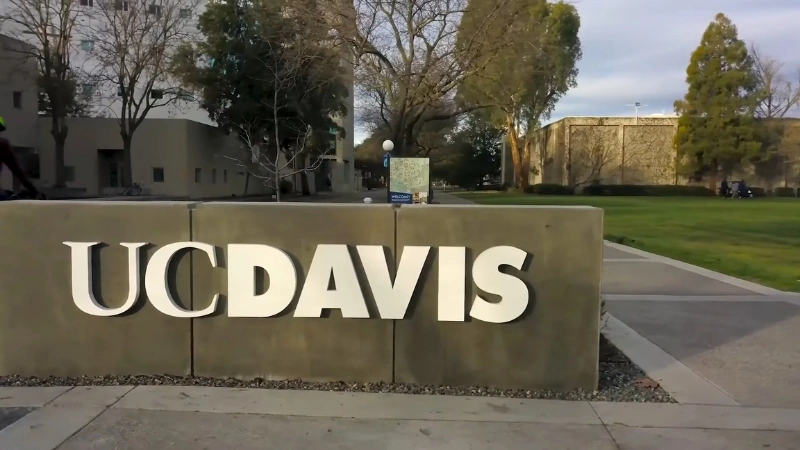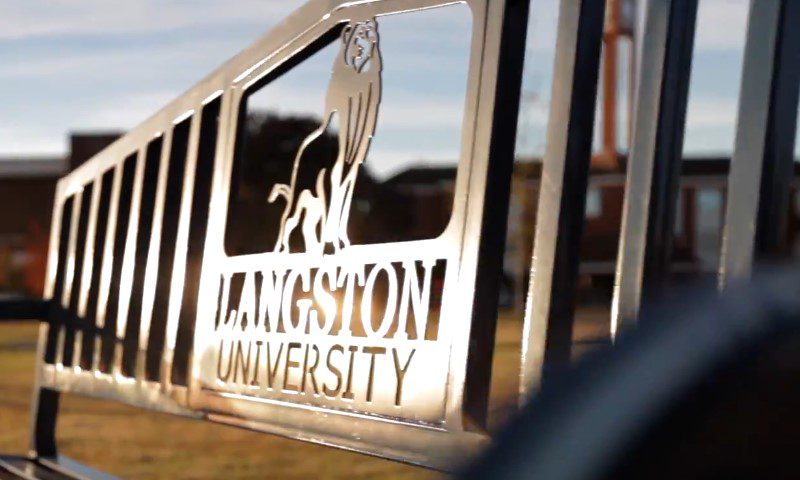
Share Post:
Selecting a strong topic for an informative speech holds great importance for every student. A thoughtful choice sets the stage for a meaningful presentation and encourages both the speaker and the audience to engage with the subject matter deeply.
Students who speak on a clear and compelling topic often inspire curiosity, build public speaking skills, and provide valuable insights that extend beyond the classroom.
An informative speech allows students to share knowledge on a wide range of subjects, including science, history, technology, health, and the arts. A well-developed topic brings academic subjects to life and transforms a simple assignment into an opportunity for exploration and learning.
Audiences benefit by gaining new information presented in a structured and memorable way, which fosters a richer understanding of the world.
A carefully prepared list of topics serves as a reliable guide for students at different academic levels.
Table of Contents
ToggleScience and Technology

Science and technology continue to shape every part of human life.
A strong speech in this category helps audiences grasp how scientific breakthroughs and modern inventions influence health, communication, transportation, and even daily habits.
Students gain the chance to present new perspectives on discoveries, explore scientific principles, and highlight the benefits and risks of technological growth.
- The rise of artificial intelligence in everyday applications
- The importance of cybersecurity in protecting personal data
- The benefits and risks of autonomous vehicles
- How smart devices transform healthcare
- The evolution of space travel and its global impact
- The future of wearable health technology
- The role of drones in agriculture and delivery services
- The ethics of human cloning research
- The effect of virtual reality on education and training
- The environmental cost of technology production
- The science behind renewable energy innovations
- The impact of gene editing tools on medicine
- The growth of 3D printing in custom manufacturing
- The challenge of electronic waste management
- The future of brain-computer interfaces
- The importance of STEM education for young learners
- The physics behind modern transportation systems
- The influence of nanotechnology on drug development
- The relationship between artificial intelligence and job markets
- The security concerns of smart cities
- The rise of quantum computing and its applications
- The effects of social robots on elderly care
Health and Wellness
Health and wellness topics address one of the most personal and universal concerns shared by all audiences.
A well-prepared speech on this subject helps inform listeners about preventive care, medical advances, and the importance of mental and physical balance. Students can inspire healthy choices and encourage self-awareness in practical, relatable ways.
- The impact of sleep quality on mental performance
- The importance of regular exercise for students
- The psychological effects of chronic illness
- The benefits of balanced diets for young adults
- The role of vaccines in global health
- The dangers of misinformation about nutrition
- The influence of stress on heart health
- The significance of early mental health education
- The risks connected to excessive caffeine consumption
- The benefits of mindfulness and meditation
- The role of family support in patient recovery
- The impact of environmental toxins on human health
- The importance of hydration in sports performance
- The connection between diet and skin health
- The value of community health programs
- The science behind fitness trackers and health apps
- The influence of cultural habits on health practices
- The importance of routine medical check-ups
- The effects of social isolation on physical health
- The role of technology in personal fitness
- The challenges of managing food allergies
- The influence of music on emotional well-being
- The health benefits of outdoor activities
Environment and Sustainability

Topics on environment and sustainability offer a chance to highlight global challenges and inspire positive action.
Speakers who focus on these issues bring attention to the relationship between human activity and nature, encouraging audiences to adopt more responsible lifestyles.
Environmental topics cover everything from conservation efforts to new green technologies.
Students who address these subjects help build awareness and promote practical solutions that support a healthier planet for future generations.
- The role of renewable energy in slowing climate change
- The impact of ocean pollution on human food sources
- The benefits of reforestation in reducing carbon emissions
- The importance of protecting endangered species
- The effects of urbanization on natural habitats
- The rise of sustainable fashion and its global influence
- The value of eco-friendly building materials
- The consequences of single-use plastics on marine life
- The role of composting in waste reduction
- The importance of biodiversity in agriculture
- The impact of deforestation on indigenous communities
- The effectiveness of electric vehicles in reducing air pollution
- The potential of vertical farming for city populations
- The risks of water scarcity in urban areas
- The importance of environmental education in schools
- The influence of policy on climate action efforts
- The challenges of preserving coral reefs
- The role of green roofs in city planning
- The contribution of local farming to sustainability
- The impact of fast food packaging on waste levels
- The importance of sustainable tourism practices
- The role of wildlife corridors in conservation strategies
- The challenges of balancing economic growth and environmental protection
Education and Student Life
Education and student life topics focus on experiences and issues that shape young minds.
A well-chosen subject in this category encourages audiences to reflect on the value of learning, the challenges of academic growth, and the importance of personal development in a school or college setting.
Speakers can highlight strategies for success, explore changes in modern education, and offer practical advice.
- The benefits of learning multiple languages at a young age
- The role of extracurricular activities in student success
- The importance of financial literacy for high school students
- The impact of digital learning tools on classroom engagement
- The value of study abroad programs for college growth
- The influence of part-time jobs on student performance
- The effects of peer pressure on academic choices
- The significance of public speaking skills for students
- The rise of online degrees and their future potential
- The relationship between school culture and student motivation
- The importance of mentorship programs in schools
- The challenges of adapting to college life after high school
- The benefits of volunteering for student development
- The role of libraries in supporting academic success
- The influence of social media on study habits
- The importance of time management in student life
- The advantages of project-based learning methods
- The role of career counseling in high school education
- The benefits of gap years before college enrollment
Arts, Literature, and History

Arts, literature, and history topics allow speakers to bring culture, creativity, and past events to life.
Presentations in this category encourage audiences to explore human expression, historical milestones, and the value of artistic traditions.
Students gain an opportunity to highlight the importance of preserving cultural heritage and to reveal the stories behind artistic achievements.
- The evolution of modern art movements in the 20th century
- The influence of classical literature on contemporary writers
- The impact of historical architecture on city identities
- The cultural significance of traditional folk music
- The life and legacy of Leonardo da Vinci
- The representation of women in ancient literature
- The role of art therapy in mental health care
- The symbolism in Shakespeare’s major works
- The history and importance of national museums
- The influence of photography on social movements
- The role of public art in community development
- The effect of banned books on freedom of expression
- The contribution of indigenous art to cultural identity
- The importance of preserving ancient manuscripts
- The impact of the printing press on global literacy
- The influence of political events on artistic expression
- The historical significance of major world expositions
- The stories behind famous monuments around the world
- The connection between literature and social change
- The use of symbolism in historical paintings
- The history of theater as a form of social commentary
- The influence of war on artistic production
Social Issues and Current Affairs
Social issues and current affairs topics encourage speakers to address challenges that affect societies worldwide. These subjects allow students to inform audiences about ongoing debates, emerging movements, and critical policy discussions.
A strong speech in this category builds awareness, fosters empathy, and helps listeners understand different perspectives.
- The rise of mental health awareness campaigns
- The effects of income inequality on education access
- The role of social media in modern activism
- The challenges of combating fake news in the digital age
- The influence of celebrity culture on social values
- The importance of privacy rights in a connected world
- The impact of immigration policies on communities
- The role of youth in environmental advocacy
- The effects of urbanization on community life
- The future of gender equality in professional fields
- The influence of technology on democratic processes
- The challenges of affordable housing in major cities
- The rise of global humanitarian aid efforts
- The impact of aging populations on healthcare systems
- The role of education in reducing poverty rates
- The effects of cultural globalization on local traditions
- The challenges of food security in developing regions
- The significance of freedom of speech in modern societies
- The impact of pandemics on global economies
- The role of volunteer organizations in disaster relief
- The importance of accessible public transportation systems
- The influence of digital currencies on financial stability
- The role of ethical consumerism in shaping markets
- The impact of workplace diversity on innovation
- The significance of mental health resources in schools
Business, Economics, and Finance

Business, economics, and finance topics help audiences understand the systems that drive markets and shape global economies.
Presenting on these subjects allows students to explore financial literacy, economic policies, and business strategies that influence daily life and future career paths.
- The rise of digital payment systems and their impact on cash use
- The importance of entrepreneurship education for young adults
- The effects of inflation on everyday expenses
- The influence of globalization on small business growth
- The role of ethical investing in modern markets
- The future of cryptocurrency in global trade
- The impact of supply chain disruptions on local economies
- The importance of budgeting skills for students
- The growth of the gig economy and its challenges
- The effects of advertising on consumer behavior
- The role of corporate social responsibility in brand reputation
- The importance of financial planning for retirement
- The relationship between economic policies and job creation
- The effects of minimum wage laws on small businesses
- The role of microfinance in supporting entrepreneurship in developing regions
- The impact of tourism on local economies
- The benefits of sustainable business practices
- The evolution of e-commerce and its influence on traditional retail
- The role of women in global business leadership
- The importance of intellectual property rights in innovation
- The relationship between economic inequality and social unrest
- The effects of automation on workforce dynamics
Sports and Athletics
Sports and athletics topics highlight the physical, social, and cultural dimensions of games and competitions worldwide.
Students who choose subjects in this category introduce audiences to the science behind athletic performance, the influence of sports on community building, and the stories of notable athletes.
- The science behind injury prevention in athletes
- The importance of sports for youth development
- The effects of sports sponsorship on brand marketing
- The role of technology in improving athletic performance
- The influence of major sporting events on host cities
- The challenges faced by women in professional sports
- The benefits of adaptive sports programs for individuals with disabilities
- The history of the Olympic Games and their global significance
- The impact of doping scandals on sports integrity
- The relationship between sports and national identity
- The mental health challenges of professional athletes
- The rise of e-sports and its economic potential
- The influence of coaches on team success and athlete character
- The importance of nutrition in peak athletic performance
- The effects of media coverage on athletes’ personal lives
- The role of school sports programs in promoting health
- The contribution of sports to community bonding
- The influence of fan culture on sports industry revenue
- The history and cultural impact of martial arts
- The significance of physical education in school curriculums
- The environmental impact of large-scale sporting events
- The role of sports diplomacy in international relations
Media, Entertainment, and Pop Culture

Media, entertainment, and pop culture topics reflect the trends, values, and creative works that shape public opinion and social behavior. Students who focus on this area can explore how films, music, online platforms, and celebrity culture influence individual choices and collective identities.
Presenting on these subjects offers a lively way to engage audiences, as they often connect directly to popular interests and current discussions.
Topics in this category can balance light-hearted analysis with thoughtful commentary, suitable for all academic levels.
- The evolution of social media platforms over the past decade
- The influence of reality television on young audiences
- The role of film festivals in promoting new talent
- The impact of viral trends on global marketing strategies
- The relationship between video games and cognitive development
- The effects of streaming services on traditional cinema
- The cultural significance of comic books and graphic novels
- The rise of influencer marketing and its ethical considerations
- The influence of music festivals on youth culture
- The impact of celebrity endorsements on political campaigns
- The representation of minorities in mainstream media
- The role of podcasts in shaping public discussions
- The evolution of fashion trends through social media influence
- The challenges of preserving intellectual property in digital media
- The importance of censorship and creative freedom in entertainment
- The effects of binge-watching habits on daily routines
- The role of satire in political and social commentary
- The global impact of K-pop on music and fashion industries
- The history and influence of animation in modern storytelling
- The ethical implications of deepfake technology in entertainment
- The contribution of independent films to cultural diversity
Psychology and Human Behavior
Psychology and human behavior topics provide valuable insight into the workings of the mind and social interactions.
Students who choose subjects in this area help audiences understand the reasons behind actions, emotions, and thought processes.
These speeches create strong connections with listeners because they explore universal human experiences and highlight both individual and group dynamics.
Suitable for school and college audiences, this category supports critical thinking and encourages empathy toward different perspectives.
- The psychological effects of social media addiction
- The influence of birth order on personality traits
- The role of childhood experiences in shaping adult behavior
- The science of habit formation and change
- The impact of color psychology on consumer choices
- The relationship between stress and decision-making ability
- The effects of body language on first impressions
- The connection between music and emotional states
- The importance of emotional intelligence in leadership
- The influence of peer groups on adolescent behavior
- The psychology behind procrastination and motivation
- The effects of sleep patterns on mental health
- The role of cognitive biases in everyday judgments
- The impact of loneliness on physical and mental health
- The science behind phobias and fears
- The importance of resilience in overcoming challenges
- The role of positive reinforcement in education
- The psychological effects of long-term goal setting
- The connection between self-esteem and social media use
Culture, Travel, and Global Topics

Culture, travel, and global topics help audiences appreciate the diversity of human traditions, places, and world issues.
Presentations in this area encourage open-mindedness and a broader understanding of different lifestyles and customs. Students gain a chance to highlight unique cultural practices, explore travel’s educational value, and discuss major international themes.
- The impact of cultural festivals on community identity
- The importance of preserving endangered languages
- The effects of global tourism on local economies
- The value of learning about world religions in education
- The influence of migration on cultural exchange
- The challenges faced by indigenous communities worldwide
- The role of food in expressing cultural identity
- The significance of UNESCO World Heritage Sites
- The effects of globalization on traditional crafts
- The educational benefits of international student exchange programs
- The relationship between cultural norms and business practices
- The impact of fashion as a form of cultural expression
- The effects of urbanization on traditional village life
- The importance of protecting natural wonders as cultural assets
- The influence of global media on local cultures
- The value of intercultural communication skills
- The role of traditional music in preserving heritage
- The significance of cross-cultural friendships
- The effects of climate change on indigenous ways of life
- The importance of ethical travel practices
Food and Nutrition
Food and nutrition topics allow students to share insights into the science, traditions, and health aspects of what people eat.
Presentations in this area help audiences make informed choices and understand cultural relationships with food. A strong speech on these subjects combines practical advice with interesting facts, creating a topic that is both educational and enjoyable.
- The health benefits of a plant-based diet
- The science behind food cravings and appetite control
- The cultural importance of traditional holiday dishes
- The impact of sugar consumption on public health
- The rise of organic farming and its effects on nutrition
- The role of school meal programs in child development
- The dangers of fad diets and misleading nutrition claims
- The benefits of incorporating whole grains into daily meals
- The influence of advertising on food choices among youth
- The relationship between gut health and immune function
- The significance of family meals for emotional well-being
- The environmental impact of meat production
- The importance of hydration for cognitive performance
- The nutritional value of ancient grains in modern diets
- The role of vitamins and minerals in disease prevention
- The effects of food deserts on community health
- The global spread of fast-food culture and its consequences
- The science behind food preservation techniques
- The importance of teaching cooking skills in schools
- The benefits of fermented foods for digestive health
Law, Politics, and Government

Law, politics, and government topics give students a chance to explore structures and policies that guide societies.
Presentations on these subjects help audiences understand legal systems, political movements, and public administration.
- The importance of voting rights in a democratic society
- The effects of campaign financing on election outcomes
- The role of constitutional law in protecting civil liberties
- The challenges of immigration reform policies
- The impact of international trade agreements on local economies
- The significance of the separation of powers in government
- The influence of lobbying on policy-making decisions
- The importance of transparency in public administration
- The effects of gerrymandering on fair representation
- The rise of populist movements in global politics
- The role of youth activism in shaping future policies
- The importance of judicial independence in democratic systems
- The relationship between media coverage and political campaigns
- The impact of cybersecurity on national security
- The benefits of civic education in schools
- The challenges of balancing national security and individual privacy
- The influence of international organizations on global peacekeeping
- The significance of human rights treaties worldwide
- The role of local government in community development
Innovation and Future Trends
Innovation and future trends topics allow students to discuss upcoming developments that may shape society in new ways.
Presentations in this area inspire curiosity and invite audiences to imagine possible advancements in various fields.
- The future of artificial intelligence in everyday life
- The potential of autonomous delivery systems in urban areas
- The influence of biotechnology on agriculture and food supply
- The possibilities of space colonization and its challenges
- The development of sustainable energy sources for future needs
- The role of wearable technology in personalized health care
- The growth of virtual reality in education and training
- The potential impact of brain-computer interfaces on communication
- The future of remote work in global business environments
- The evolution of smart cities and their social implications
- The significance of green architecture in urban planning
- The rise of telemedicine and its effect on health care access
- The future of personalized learning through AI systems
- The potential role of quantum computing in scientific research
- The impact of advanced robotics on daily tasks
- The possibilities of gene therapy for rare diseases
- The future of sustainable packaging and its environmental effects
- The influence of blockchain technology on supply chain security
Fun, Unique, and Unusual Topics

Fun, unique, and unusual topics capture the audience’s attention by presenting surprising or light-hearted subjects.
Students can choose creative angles to explore scientific oddities, quirky facts, and lesser-known stories.
- The history and science of laughter
- The world’s most unusual festivals and their origins
- The psychology behind collecting rare objects
- The story of the longest-running jokes in history
- The origins of superstitions in different cultures
- The science behind optical illusions and brain perception
- The history of bizarre sports played around the world
- The strangest foods eaten in various countries
- The story behind record-breaking human achievements
- The reasons some animals became cultural symbols
- The influence of lucky charms on human behavior
- The unusual history of forgotten inventions
- The effects of color choices on mood and surroundings
- The most surprising animal friendships ever recorded
- The science of amusement park ride design
- The story of unusual world records in food competitions
- The symbolic meanings of numbers in different cultures
- The effects of extreme weather events on daily life
- The traditions behind odd holiday customs
- The most peculiar phobias and their possible explanations
Everyday Life and Practical Skills
Everyday life and practical skills topics help audiences gain useful knowledge that can improve daily activities and personal growth. Students who present on these subjects share tips and techniques for managing common tasks, solving everyday challenges, and building essential life skills.
- The benefits of learning basic cooking skills
- The importance of financial budgeting for young adults
- The advantages of learning first aid techniques
- The impact of effective time management on productivity
- The value of keeping a personal journal for mental clarity
- The basics of home organization for stress reduction
- The benefits of public speaking experience for career success
- The importance of digital literacy in modern society
- The role of personal goal setting in life achievements
- The advantages of developing strong listening skills
- The value of critical thinking in everyday decision-making
- The importance of sleep routines for consistent energy
- The basics of car maintenance for new drivers
- The benefits of practicing gratitude in daily life
- The importance of personal safety awareness in public spaces
Animals and Nature

Animals and nature topics invite audiences to explore the wonders of the natural world and understand the importance of protecting wildlife and habitats.
Presentations on these subjects inspire appreciation for biodiversity and highlight the connections between humans and other species. Students can inform listeners about conservation efforts, animal behavior, and the value of natural ecosystems.
- The role of national parks in wildlife conservation
- The intelligence of dolphins and their communication methods
- The effects of habitat destruction on bird populations
- The importance of pollinators in global food production
- The challenges of rehabilitating endangered species
- The migration patterns of monarch butterflies
- The social structure of elephant herds
- The unique adaptations of animals in extreme environments
- The role of urban green spaces in supporting biodiversity
- The impact of climate change on Arctic wildlife
- The cultural significance of wolves in different societies
- The importance of marine protected areas for ocean life
- The behavior and intelligence of octopuses
- The significance of amphibians as environmental indicators
- The conservation challenges faced by big cats
- The relationship between humans and domesticated animals
- The role of wildlife corridors in connecting habitats
Fashion and Lifestyle
Fashion and lifestyle topics explore trends, personal expression, and cultural influence in daily choices. Students who focus on these subjects can help audiences understand how clothing, beauty standards, and lifestyle habits reflect identity and social values.
- The evolution of streetwear as a global fashion movement
- The impact of fast fashion on the environment and workers
- The influence of traditional clothing on modern design
- The importance of sustainable fashion practices
- The psychology behind color choices in fashion
- The rise of minimalist lifestyles and their benefits
- The influence of fashion icons on youth culture
- The role of accessories in personal style statements
- The connection between fashion trends and economic cycles
- The cultural significance of body art and tattoos
- The impact of celebrity endorsements on beauty standards
- The role of social media in shaping lifestyle trends
- The importance of personal grooming for professional success
- The influence of cultural festivals on seasonal fashion
- The growth of gender-neutral fashion movements
Relationships and Communication

Relationships and communication topics focus on building strong connections and understanding interpersonal dynamics. Students who speak on these subjects help audiences learn about effective interaction, emotional bonds, and social development.
This category remains relevant and practical for all educational levels.
- The role of active listening in strengthening friendships
- The importance of nonverbal communication cues
- The effects of digital communication on personal relationships
- The value of conflict resolution skills in daily life
- The influence of family dynamics on personal development
- The impact of cultural differences on communication styles
- The importance of trust in building long-lasting relationships
- The challenges of maintaining long-distance friendships
- The role of empathy in effective leadership
- The influence of childhood friendships on adult social behavior
- The benefits of open communication in family life
- The importance of setting healthy boundaries in relationships
- The role of social skills in academic and career success
Digital Life and Internet Culture
Digital life and internet culture topics help audiences understand the growing influence of online platforms and technology-driven interactions.
Presentations in this area address the opportunities and risks of living in a digital world. Students can explore trends, social behaviors, and the effects of digital innovation on everyday life.
- The rise of meme culture and its influence on humor
- The impact of online gaming communities on social connections
- The role of virtual influencers in modern marketing
- The effects of online privacy breaches on public trust
- The challenges of managing screen time for young people
- The evolution of internet slang and its cultural impact
- The influence of online reviews on consumer decisions
- The ethics of artificial intelligence in content creation
- The role of crowdfunding platforms in supporting creativity
- The significance of digital archives in preserving history
- The impact of streaming platforms on music and film industries
- The importance of cybersecurity education for students
- The effects of social media challenges on youth behavior
- The role of digital activism in social movements
- The growth of remote communities in online learning spaces
Tips for Selecting the Best Informative Speech Topic

A well-chosen topic strengthens a speaker’s confidence and keeps the audience focused. Careful selection shapes the speech’s success and supports better engagement in both school and college settings.
Match the Topic to Audience Interests
Understanding the audience is a key step. Younger audiences often prefer lighter or visually supported topics, while older or college-level audiences appreciate deeper analysis and complex subjects.
A topic that aligns with shared interests creates an instant connection and makes the content more memorable. Speakers can consider class trends, recent discussions, or community issues when deciding.
Evaluate the Availability of Reliable Sources
Strong informative speeches depend on accurate information. Before finalizing a topic, students should confirm that reliable sources are available.
Academic journals, respected news outlets, and official publications provide credible facts and support arguments. Lack of source material can weaken the message and limit the depth of analysis.
Balance Personal Passion and Educational Value
A topic should reflect both personal enthusiasm and value for the audience. Passion helps the speaker maintain energy throughout preparation and delivery, while educational value ensures listeners gain new insights.
When these two elements align, the speaker can communicate with natural authority and inspire curiosity among peers.
Steps for Effective Speech Preparation and Presentation
Successful speeches rely on clear preparation and a confident delivery. Each stage contributes to stronger structure, better audience connection, and higher impact.
Organize Ideas into a Logical Structure
A clear outline guides the speech and prevents confusion. Starting with a strong introduction sets the tone, while main points should be grouped logically and supported with evidence.
A strong conclusion reinforces key messages and leaves a lasting impression. Using bullet points or a written outline during planning helps maintain focus and flow.
Practice to Improve Delivery
Repeated practice builds confidence and reveals weak points in timing or clarity. Speaking in front of friends, recording rehearsals, or using mirrors can help refine gestures and voice control.
Practicing also improves memory, reduces anxiety, and strengthens the speaker’s ability to handle unexpected interruptions or questions.
Use Visual Aids and Nonverbal Cues Wisely
Visual aids, such as slides or props, can clarify complex ideas and capture attention. However, overuse or poor design distracts the audience. Visual elements should support, not replace, spoken words.
Nonverbal cues like eye contact, posture, and natural hand movements help establish credibility and create a stronger personal connection.
FAQs
Bottom Line
Informative speeches give students a powerful opportunity to share knowledge, inspire curiosity, and develop strong communication skills.
Choosing a topic that matches audience interests and personal passion creates a foundation for a memorable presentation. Careful preparation, clear structure, and confident delivery help speakers educate and engage listeners in every setting.
A wide range of topics, from science and global issues to everyday skills and culture, ensures that every student can find a subject that fits their voice and purpose.
By using reliable sources, practicing thoroughly, and speaking with sincerity, any student can deliver a speech that leaves a lasting impact and supports lifelong learning.
Related Posts:
- 60+ Engaging Argumentative Essay Topics for Students
- 300+ Persuasive Speech Topics for 2025 – Powerful…
- Top Aerospace Engineering Colleges in the U.S. (2025…
- What to Do After High School - 10 Alternatives to College
- Sick of Traditional College? Top 10 Jobs Don’t Need…
- What Should You Include in a College Portfolio?








